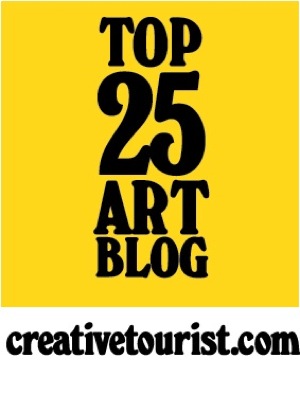So this is an ambitious one even by Tate Britain's usual standards. Watercolour takes on a medium that has historically been associated with wishy-washy flower paintings by Victorian ladies, or runny landscapes by amateur painters, and invites us to challenge our preconceptions, in what aims to be 'a fresh assessment of the history of watercolour painting'.
The result is a whistle-stop tour through the history of watercolour as a medium, showing it to be far more than a vehicle for representing nostalgic English rural scenes. The 250 paintings in this exhibition in fact include not merely sunsets and meadows, but also maps, abstracts, botanical illustrations, and even paintings of battlefields and concentration camps. Though there are some notable omissions (David Hockney springs immediately to mind) there is a very wide range of artists repesented, encompassing both celebrated watercolorists like J.M.W. Turner, William Blake and Paul Nash together with contemporary artists who are not primarily thought of as working with watercolour, including Anish Kapoor, Andy Goldsworthy and Tracy Emin. A central portion of the exhibition also explores the mechanics of how watercolour painting works, and the techniques that have been used by artists over the ages: small vitrines display all the paraphenalia of painting, inviting us to peer at dirty paintboxes, half-empty tubes of paint, smeared palettes and even Turner's paintbox.
The curators of this well thought out exhibition have evidently done their utmost to avoid clichés, and offer a genuinely different take on a medium that is often written off as being simply 'accessible', safe and dull. But whilst there's no doubt that this exhibition convincingly demonstrates the range and versatility of watercolour as a medium, proving that it can pack a powerful punch, at times the pace feels a little too hectic, the scope a little too wide, and there seems to be something oddly lacking.
Ultimately, for me however, the strength of this ambitious show is all in the power of the individual works that catch your eye (for me it was Patrick Heron and Howard Hodgkin, but for someone else it would doubtless be different) and stop you in your tracks, which really make you think again.
[Image: Patrick Heron, January 9: 1983: II 1983 © Estate of Patrick Heron. All Rights Reserved, DACS 2002]
















0 comments:
Post a Comment